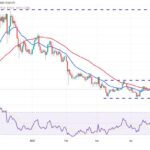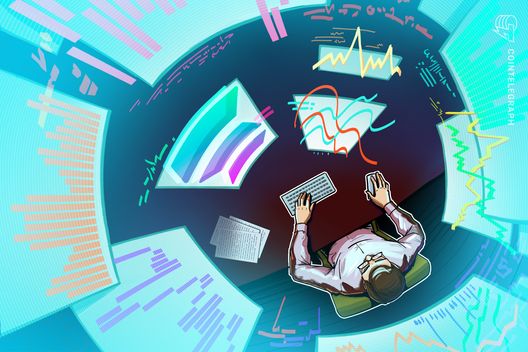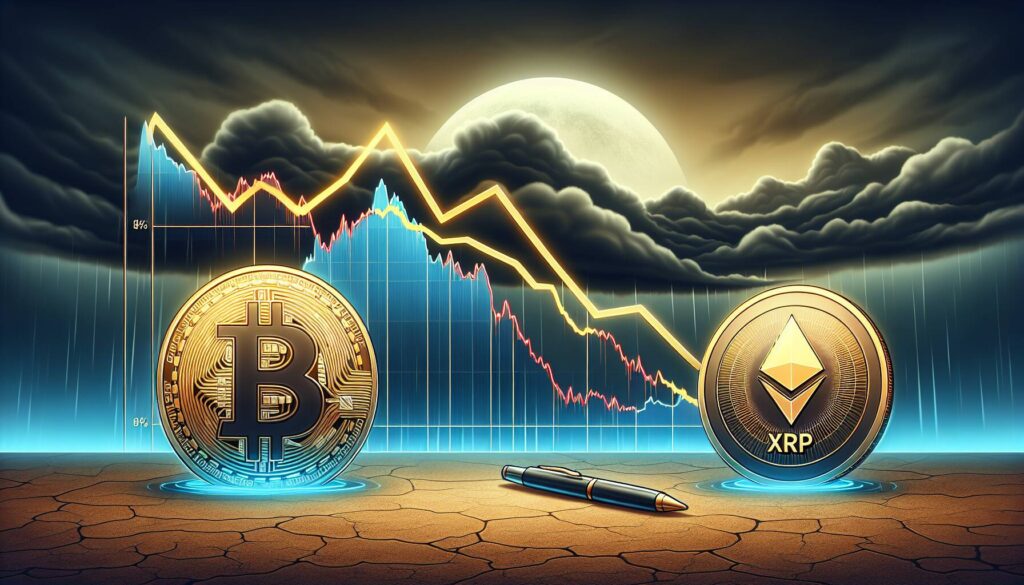The U.S. Federal Reserve has decided to maintain its benchmark fed funds rate, keeping it steady in the range of 4.25% to 4.50%. This marks the third consecutive meeting where policymakers have paused any moves toward easing monetary policy. In a recent statement, the Fed highlighted growing uncertainty about the economic outlook, noting that potential risks for both inflation and unemployment have intensified.
In the wake of the Fed’s announcement, Bitcoin (BTC) experienced a slight dip, trading at approximately $96,600 after initially surging past $97,000 during a recent rally linked to U.S.-China trade discussions. The Fed’s decision comes amid a complex macroeconomic environment shaped by the Trump administration’s global tariffs, which have created numerous questions regarding their impact on consumer prices. Inflation continues to linger above the Fed’s 2% target, leading to concerns about how these tariffs might further affect the economy.
“Uncertainty about the economic outlook has increased further,” the Fed stated, underscoring the delicate balance policymakers are trying to maintain.
Market analysts are speculating on potential rate cuts later this year, with July being pointed to as a likely timeframe for the first reduction. However, members of the Fed have indicated that they wish to gather more insights on the effects of tariffs before making any strategic decisions. As such, all eyes are now focused on Fed Chair Jerome Powell’s upcoming remarks, expected at 2:30 PM ET, which may shed more light on the central bank’s future plans in an ever-evolving economic landscape.

U.S. Federal Reserve’s Monetary Policy Update
The recent decision by the U.S. Federal Reserve to maintain its benchmark fed funds rate has several implications for the economy and personal finance. Here are the key points:
- Fed Funds Rate Held Steady:
- The rate remains at 4.25%-4.50%, marking the third consecutive meeting without cuts.
- This decision signals a cautious approach amid rising economic uncertainties.
- Economic Uncertainty:
- The Fed acknowledges increased uncertainty regarding the economic outlook.
- They note heightened risks of higher unemployment and higher inflation.
- Impact of Tariffs:
- The ongoing tariffs from the Trump administration complicate the economic landscape.
- Concerns about how tariffs affect consumer prices are prevalent, potentially influencing budgets and spending.
- Bitcoin’s Market Movements:
- Bitcoin temporarily fell below $97,000, reflecting market reactions to Fed policies and trade news.
- Investors should be aware of cryptocurrency’s volatility, particularly in response to macroeconomic developments.
- Future Rate Cuts Anticipated:
- Market participants predict three rate cuts this year, with July being a target for the first decrease.
- Fed members emphasize the need for clarity on tariffs before making any significant changes.
- Powell’s Upcoming Remarks:
- Attention is focused on Jerome Powell’s statements, which may provide insight into future policy direction.
- Consumer confidence and spending may be influenced by the Fed’s communicated outlook and strategies.
This information highlights the Fed’s cautious approach amidst economic uncertainty, which may affect personal finance decisions related to spending, investing, and saving.
The Fed’s Rate Decision: Implications for Markets and Bitcoin
The U.S. Federal Reserve’s recent decision to maintain its benchmark interest rate at 4.25%-4.50% reflects ongoing uncertainty in the economic landscape, a sentiment echoed across various financial news outlets. While some analysts view this as a prudent measure, suggesting it allows for a wait-and-see approach regarding the potential impacts of tariffs and inflation, others criticize the lack of decisive action in a fluctuating market.
One significant advantage of this decision is its potential to stabilize the financial markets by avoiding abrupt rate changes that could lead to further economic uncertainty. Investors in equities and fixed income might breathe a sigh of relief as the Fed’s pause could prevent immediate shocks, allowing them to adjust their strategies. In contrast, the failure to cut rates as anticipated might also strain markets, especially for sectors heavily reliant on low borrowing costs, such as real estate and utilities.
In the realm of cryptocurrency, Bitcoin’s recent fluctuation below the $97,000 mark amid the Fed’s announcement indicates a cautious approach among investors. The crypto market thrives on volatility, but the Fed’s stance could inadvertently suppress speculative trading. This could benefit long-term holders who prioritize stability over short-term gains while creating challenges for traders looking for immediate, high-volatility opportunities.
The balance the Fed aims to maintain—considering both unemployment risks and persistent inflation—presents significant implications for consumers and small businesses. Those with variable-rate loans may find their borrowing costs more manageable in the short term but face lingering inflation pressures that affect purchasing power. Conversely, businesses tied closely to consumer spending could feel the pinch of a slower economy if inflation continues to rise without corresponding wage growth.
Looking forward, all eyes are on the upcoming remarks from Fed Chair Jerome Powell, which could illuminate future policy shifts. Market forces have already begun to speculate on potential rate cuts, with a notable focus on the projected July meeting. Depending on Powell’s rhetoric, this could either bolster market sentiment or exacerbate uncertainty, impacting both established players and new market entrants.
Overall, the Federal Reserve’s decision leaves the market in a state of cautious observation, where the strengths and weaknesses of current monetary policy will play pivotal roles in shaping the economic recovery and the ongoing evolution of digital currencies like Bitcoin.

















